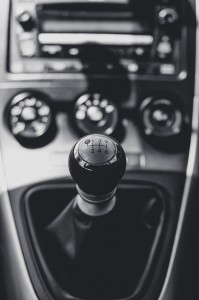 So, you’ve just turned 16, popped down to the transport department and passed your learner licence test. Congratulations!! Now what?!
So, you’ve just turned 16, popped down to the transport department and passed your learner licence test. Congratulations!! Now what?!
Many of our customers are quite apprehensive about their first driving lesson. A common fear is “what if I crash the car?” or “what if I can’t do what they expect me to be able to do?” We realise that although the trainer has delivered a “lesson one” hundreds of times, it’s the first time for our customer.
In a Manual Car
For a manual car, lesson one is all about allowing a beginner driver to learn and experience how the mechanics of the car work through explanation, demonstration and “having a go.” We take the learner to a quiet, flat road and explain, with the assistance of diagrams, how the clutch, accelerator and brake interact with each other to get a car moving and stopping. We encourage learners to spend time feeling where the “friction point” of the clutch is without using the accelerator at all. Bit by bit, we introduce the accelerator on take offs, how to change gears, how to do hill starts and in most cases, we begin an introduction to using a System of Vehicle Control which drivers use as best practice for approaching intersections. Again, this is all done in a quiet area away from traffic and complex road situations. Our goal is for a beginner driver to come home knowing how to “drive a car” even if they haven’t yet mastered the skill. Other concepts such as learning how controls such as wipers, headlights, air controls etc are a part of our overall program. However, we prefer to focus on basic vehicle operation skills in the first lesson to inspire our learners to feel that driving a manual car is not beyond them.
In an Automatic Car
For an automatic car, it’s obviously easier for a beginner driver to learn the basic vehicle operation skills. The accelerator makes the car go faster and the brake slows the car down. Our focus shifts to working with the learner on “feeling” the pedals to achieve a soft and gentle transition through speeding up and slowing down. We also work on correct steering and vision techniques for left turns and right turns to achieve the most effective turning positions when cornering. Once again, this is done in quiet streets away from other traffic to ensure our customer is not distracted or intimidated by other road users. If the learner demonstrates enough competence and confidence to drive the car home at the end of the lesson, we encourage this to happen to enhance the sense of achievement.
Prior Experience
Of course, many of our lesson one customers already have some driving experience. Rather than forcing them to sit through explanations of things they may already know, we work with the customer to explore the things they can already do well and identify the areas that require teaching and improvement. We always like to provide the reasoning behind why one particular driving technique might work better than another and allow the learner the opportunity to try a variety of options to discover a system that works for them within the expectations of a driving assessment. Getting a car moving on an uphill slope is an example of this.
Dual Controls
It is most important to remember that we have dual control pedals (clutch (for manual cars), accelerator and brake) installed in all of our training vehicles. With the exception of steering and indicating, we can (and often do) fully operate the car from the passenger side. Some of our more nervous learners enjoy their first experience behind the wheel to simply be steering to get a feel for how the steering wheel impacts on turning the car. It is also not uncommon for a customer to ask for a family member to come along as well as an observer. This practice is most definitely encouraged by us as it helps to provide a consistency for the learner between lessons.
If you’d like to know more about this blog or any aspect of our training, contact us for further information.